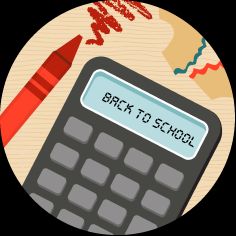Anytime children are exposed to other children, they’re bound to get sick. I call day care a “necessary evil.” Working families need caregivers for their children, and children need to learn and socialize, but they pick up more than just knowledge at school.
Germs are transferred either in the air or by touch. Children always touch things, including their own faces and mouths, so they easily pick up germs and spread them. Prevention is impossible, though there are steps your family can take to decrease the likelihood of getting sick and improve recovery.
I recommend vaccinating all children according to the
While there’s no vaccine or cure for the common cold, good hygiene can help prevent the spread of germs. It’s essential to wash hands after touching toys, hard surfaces, and other people. Good nutrition is another helpful way to boost the body’s immune system and help it to fight off infections.
With various infections, our immune system develops antibodies that prevent another infection or help fight the infection resulting in less severe illness. The “hygiene hypothesis” suggests that living in an environment that is too clean prevents the immune system from developing adequately, resulting in allergic diseases such as asthma.
While there is research on this topic, several immunologists (doctors who study the immune system) have disagreed with this concept.
Ultimately, we know typical children do not live in sterile environments, so they will be exposed to germs and have plenty of opportunities to develop their immune systems.
I recommend developing a regular cleaning routine that includes disinfecting children’s toys and anything else they share with others or take to school.
Keep in mind, there’s a difference between cleaning, sanitizing, and disinfecting. Cleaning removes visible dirt, while sanitizing decreases the number of germs on the surface. Disinfecting kills germs, providing the highest level of protection.
Be sure to read labels carefully and supervise children while using any cleaning product, as they can be harmful if inhaled or ingested. And rinse the surface of toys with water after cleaning, especially for teething toys that go into the mouth.
You should start with cleaning all objects that come into contact with hands and mouths with soap and water. Afterward, use a sanitizer to clean everyday items, especially things that go into mouths.
Use a disinfectant, which is typically more potent, on objects touched by someone sick.
Since you never know when a child is sick at school, I recommend disinfecting anything brought from school into the home. The Environmental Protection Agency (EPA) website provides a list of approved sanitizers and disinfectants that are effective. You can also review product labels to see which germs they work against.
Make hand-washing fun! You can sing songs and count numbers while washing your hands. It’s also important to explain the benefit of handwashing to children and teach them that they’re keeping themselves and everyone else healthy.
Be sure to lead by example. Your child will want to wash hands when they see you washing yours.
The most natural way to boost immunity is by providing adequate nutrition for your child.
Children need a balanced diet that includes protein, vegetables, fruits, healthy fats and carbohydrates, and plenty of water for hydration.
While multivitamins aren’t necessary for adequately nourished children, if you feel your child needs a supplement, I recommend one without added sugar. However, supplements do not replace adequate nutrition from real food. And be sure to keep vitamins out of reach when not in use and supervise your child when taking them since they can be a choking hazard.
Modeling appropriate behaviors is essential for children. They will follow suit if they see you covering your mouth or coughing into your elbow (to avoid spreading germs onto your hands). If you cough or sneeze into your hands, it’s best to use a tissue, throw it away, then wash your hands or use hand sanitizer afterward (soap and water is the preferred option for cleaning).
Practice these behaviors at home and provide positive reinforcement when your child attempts to cover their coughs and sneezes. Smile, hug them, and encourage them to continue doing their part in keeping themselves and others healthy.
When traveling, your child is exposed to a broader group of people who may carry germs they have never been exposed to, which increases their risk of infection.
While children explore their environments by touching, you can teach your child to wash their hands regularly, especially before eating. Pack disinfectant wipes for easy cleaning on the go, and use hand sanitizer when needed, keeping in mind that soap and water are best when available.
In addition to hand hygiene, adequate sleep, proper hydration, and good nutrition help our bodies’ immune systems function optimally, so it helps to maintain these routines while traveling.
Dr. Mia Armstrong is an ABMS board certified pediatrician and a fellow of the American Academy of Pediatrics (FAAP). Dr. Armstrong loves sharing with others and helping families learn to be healthy.


